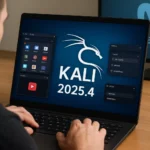Google is expanding Gmail account recovery with a new option called Recovery Contacts, a human-assisted mechanism that lets users designate trusted people to verify their identity when standard recovery factors—such as SMS codes, backup email, or hardware keys—are unavailable. The approach aims to close a long‑standing gap in account recovery without weakening phishing resistance.
What Recovery Contacts Are and Why They Matter for Passkeys
The feature complements Google’s shift toward passwordless authentication using passkeys based on FIDO2/WebAuthn public‑key cryptography. Passkeys bind authentication to a user’s device and the service’s domain, making credential phishing significantly harder compared to passwords. However, device loss or the unavailability of a second factor can still stall recovery. Recovery Contacts provide a controlled, human-in-the-loop fallback that preserves strong assurance while enabling legitimate users to regain access.
How Gmail Recovery via Trusted Contacts Works
Users can nominate up to 10 Recovery Contacts per account and may serve as a trusted contact for up to 25 other accounts. When a recovery flow starts, the designated contact receives a prompt and is shown three numeric codes. The contact must select the code that the account owner independently communicates to them, creating a low-friction but verifiable challenge-response.
Risk Controls, Signals, and Temporary Locks
To mitigate misuse, Google applies multi-layered verification that can include signals such as device history, IP address, and geolocation. Even with a contact’s approval, Google may temporarily lock the account for additional checks, giving the legitimate owner time to intervene if suspicious activity is detected. This layered approach aligns with modern account recovery guidance that prioritizes context-aware risk evaluation.
Limits, Time Windows, and Eligibility
A Recovery Contact request is valid for 15 minutes. If the contact does not respond in time, the user must resend the request or select another contact. The feature is not available to Google Workspace enterprise accounts, participants in the Advanced Protection Program, or child accounts. These users cannot assign Recovery Contacts but can still act as a trusted contact for others.
Security Considerations: Social Engineering Remains the Prime Risk
Any human-assisted control introduces potential exposure to social engineering. A typical scenario involves an attacker triggering a recovery flow and then contacting the trusted person from a spoofed email or phone number to solicit the code. The Verizon Data Breach Investigations Report (DBIR) 2024 notes the human element remains a leading contributor to security incidents, underscoring the need for clear procedures and training.
Practical, Low-Friction Hardening Tips
- Pick contacts who can respond quickly and understand basic cyber hygiene.
- Agree on a verification channel in advance: for example, the contact should place a voice call to the owner’s primary number before confirming any code.
- Never approve a code until the initiator passes your prearranged identity check (e.g., a shared secret or live call-back).
- Review your contact list regularly and keep phone numbers and emails up to date.
Where Passkeys Fit and How Recovery Contacts Add Resilience
Passkeys deliver phishing-resistant authentication by design, as recognized in NIST SP 800‑63 guidance and industry best practices. Recovery Contacts do not replace passkeys or hardware security keys; instead, they raise the resilience of account recovery when a device is lost or a factor is unavailable—one of the most common failure modes in consumer identity and access management. Google previously enabled passkeys by default for personal accounts, and this addition balances convenience with assurance by layering human verification atop risk signals.
The introduction of Recovery Contacts strengthens Gmail’s recovery posture without reverting to weaker authentication. For best protection, combine passkeys with well-chosen Recovery Contacts, keep backup factors current, and brief your trusted helpers on anti–social engineering practices. These steps reduce recovery friction for legitimate users while limiting opportunities for attackers.






